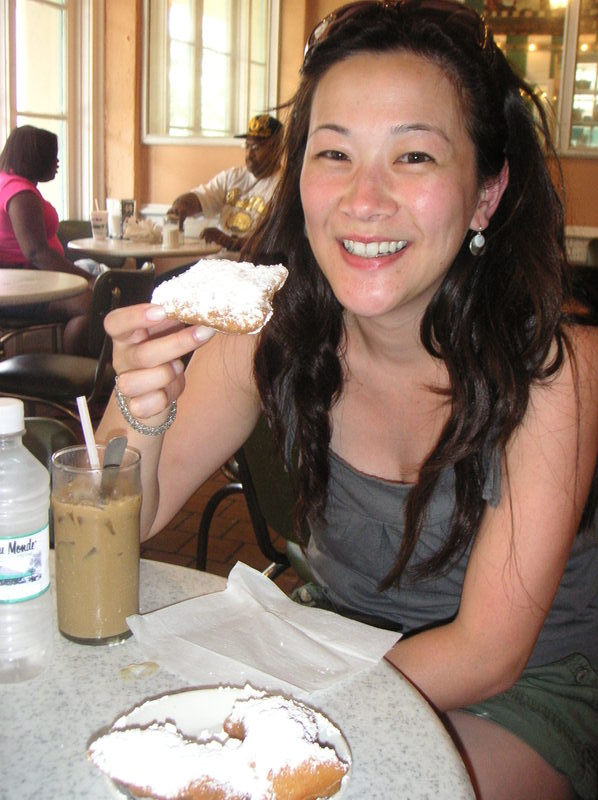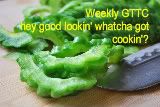I was super successful with the Seminole pumpkins I grew this year. I got 8 large pumpkins (one was stolen by the raccoons) from one very prolific plant that took over half my side yard. I also got lots of wonderful blossoms for eating as well.
I harvested these gorgeous pumpkins just as the fall issue of Heirloom Gardener came out. First, I'd like to mention that my article about food preservation is in this issue, and second, I found an AMAZING recipe for Thai Curry and Coconut Pumpkin Soup inside. The recipe in the magazine is adapted from another recipe. The recipe below, I have adapted again, using bits and pieces from my standby squash soup and the ingredients suggested in Heirloom Gardener. I also decided to top this soup with a few jumbo shrimp. No photo of the soup. It was devoured too quickly!
Thai Curry and Coconut Pumpkin Soup
1 large pie pumpkin or butternut squash
2 leeks (I've used a special Chinese onion, see caption above), white portions only, chopped and rinsed
2 inch length of ginger, peeled and minced (This is a lot - but I love ginger. Scale down if you like)
2 teaspoons of Thai red curry paste
4 cups chicken or vegetable stock
1 can unsweetened coconut milk
3 kaffir lime leaves
1/2 lime
Cut pumpkin in half. Scoop out seeds. Place cut side down in baking pan along with about 1/2 inch of water. Bake in 350 degree oven for about 1 hour or until squash is tender. Allow to cool and then scoop out flesh with a spoon.
In pot, saute leeks and ginger in a little oil or butter until tender. Add red curry paste and continue to stir and cook for another minute or two. Add stock, coconut milk and cooked pumpkin. Puree in batches in a blender or carefully puree in pot using an immersion blender. Add kaffir lime leaves. Simmer soup for about 15 minutes. Before serving, remove kaffir lime leaves and stir in juice from half a lime.
.jpg)
.jpg)













.jpg)
.jpg)
























